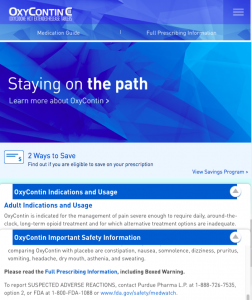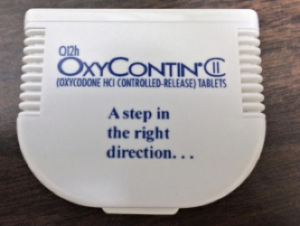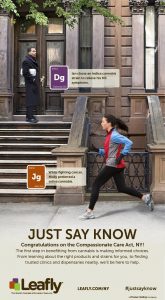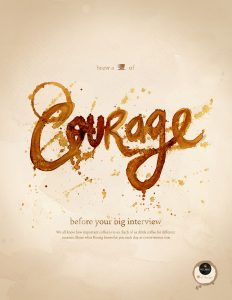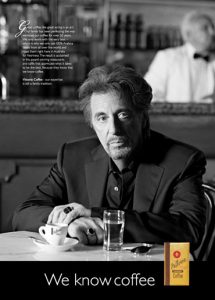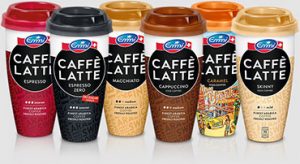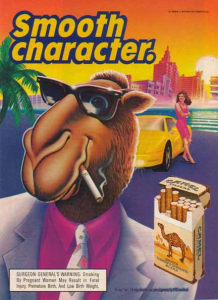I wanted to focus my first blog on Camel tobacco products, primarily cigarettes but chew as well, the drug in these products is nicotine.
Here’s an ad from today, focused more on showing options and variety or new features with cigarettes filtration.

And Here’s an old Camel ad from the 60’s to show you a little more about Camel cigarettes and the history of the cigarette. It’s crazy to see how advertising has shifted to showing variety of products rather than speak about health issues. (likely because today we all know cigarettes are unhealthy.
https://www.youtube.com/watch?v=gCMzjJjuxQI
History of the Camel
Camel cigarettes were invented by R.J. Reynolds in 1913. They contain a blend of both Turkish and Virginian tobacco and the brand was founded Winston-Salem, North Carolina (Camel city).
Reynolds mission at Camel was to sell a prepackaged cigarette because at the time, most people rolled their own. By using Turkish papers, Reynolds could sell his cigarettes for cheaper and within a year he had sold 425 million packs of Camel cigarettes. Early on, ads consisted of “healthier cigarettes” and doctor recommended cigarettes due to the fact that people didn’t know about the health effects of smoking. It wasn’t until 1987 that Joe Camel, the mascot for the brand, was created. With joe Camel around, advertisements became more recognizable and the company continued to grow only now known for the Camel. This was a logical advertisement idea because it tied the product to a brand with a very recognizable character.
Ads back then and even today attract a very wide audience. Because so many people used to smoke, and so many types of people still do it’s easy to make adds for current smokers. To do this Camel has implemented a lot of variety into their products. Different flavors or kinds of cigarettes have been marketed to fit every users wants and maybe steal users from other brands that don’t have as many options. As well as, like in the video, ads with doctors or celebrities that smoke a brand to influence people to smoke that brand because it is doctor recommended or their favorite actor is. Another common way to advertise was by showing a hard worker get off work and “relax” with a nice cigarette, this is a common theme and a good hook for people who work hard or have stressful jobs because they may be looking for something to take the edge off.
However, other than the audience of current smokers, new electronic cigarettes and nicotine juices have come out lately that attract a younger, newer crowd. These new products and advertisements have attracted kids or young adults that wouldn’t have otherwise smoked.
Whats in a Cigarette?
The active ingredient found in tobacco and other tobacco products is nicotine. Nicotine is a highly addictive substance. Because of the tobacco market in American and its extensive history, nicotine is quite a common drug. Considered a stimulant, about 36 million people in the united states ingest a form of nicotine (Current Cigarette…). One main thing that nicotine does to your body upon use is that it narrows the arteries in your body causing blood pressure to rise (otherwise known as vasoconstriction). While this is a main symptom of nicotine use it does many other things as well; speeds up your heart rate, can improve memory and reflexes, as well as speeding up your metabolism and breathing.
So whats killing smokers?
While nicotine is the substance that gives people the desired effects of smoking, it’s not the main health issue with smoking. Yes, smaller arteries and a high blood pressure makes a heart attack or stroke more likely but the most common effects that smoking has on people is lung, throat or mouth cancer or a collapsed lung. These symptoms occur from the constant smoke that smokers inhale and exhale and the harsh chemicals and carcinogens that are in the smoke. Around 480,000 people die every year from a smoking related death. That’s one in five people that die per year due to smoking (Current Cigarette…).
Yet we obviously don’t hear about this from companies and their advertisements.
No, they focus on keeping that information hush and preaching the stuff that will sell their product. They preach using words like: variety, choices, mild, and relaxing. These are all words that come with positive connotations and are often paired with adjectives that make them seem cooler or more desirable.
With that, they also try and disguise the same product in different forms. They have longer cigarettes, shorter ones, light or mild and strong or heavy, they use these words to make the product seem different when in reality the difference is hardly there.
Another technique that’s used is minor improvements to a cigarette whether it be a better filter or its capability to burn slower.
My thoughts
Tobacco or cigarettes are a substance that I would never recommend to somone else. They are highly addictive, with research showing that you crave another one just minutes after smoking and they have extreme potential health concerns that all can lead to death. In my opinion the risk isn’t worth the buzz and cigarettes shouldn’t ever be recommended to someone.
A brief history of tobacco. (n.d.). Retrieved October 25, 2017, from http://edition.cnn.com/US/9705/tobacco/history/
Current Cigarette Smoking Among Adults in the United States. (2016, December 01). Retrieved October 25, 2017, from https://www.cdc.gov/tobacco/data_statistics/fact_sheets/adult_data/cig_smoking/inde x.htm
History. (n.d.). Retrieved October 25, 2017, from http://www.rjrt.com/transforming- tobacco/history/
